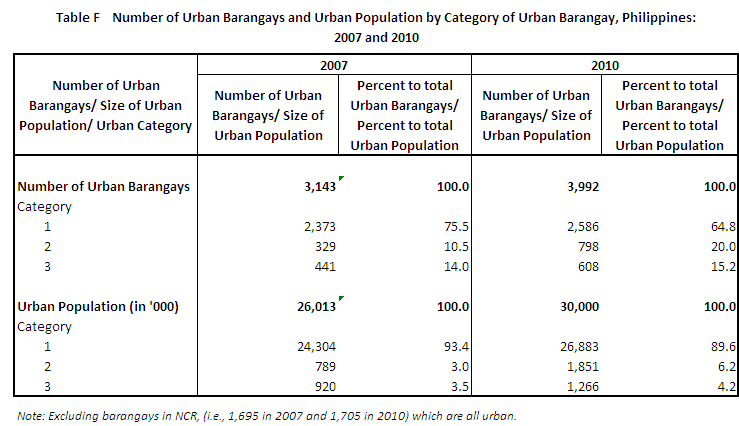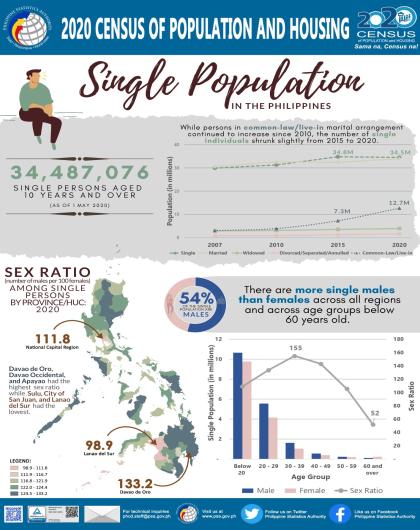HIGHLIGHTS
The level of urbanization in 2010 or the proportion of urban population to the total population was 45.3 percent. This means that of the 92.3 million population in the Philippines in 2010, 41.9 million lived in areas classified as urban (Table A). The rural population or those who lived in areas classified as rural numbered 50.5 million and accounted for 54.7 percent of the total population.
In 2007, the level of urbanization was 42.4 percent (Table A).
Excluding National Capital Region (NCR), which is entirely urban, in 2010 and 2007, there were four regions namely, Region III, Region IV-A, Region XI, and Region XII, which had a level of urbanization higher than the level of urbanization for the entire country, which was 45.3 percent in 2010 and 42.4 percent in 2007 (Table A).
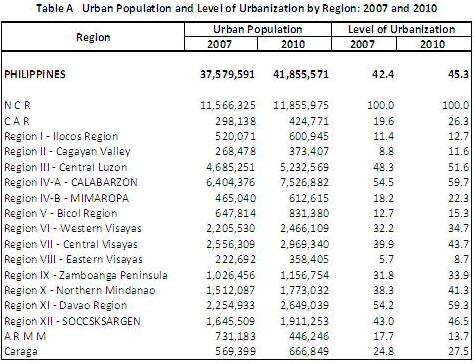
In 2010, nine out of the total 80 provinces registered a level of urbanization higher than the national level (Table B). Rizal had the highest level of urbanization of 92.7 percent, followed by Laguna (71.9%) and Bulacan (70.9%). In 2007, except for Bataan, these provinces also had a level of urbanization higher than the level of urbanization for the country (42.4 %).
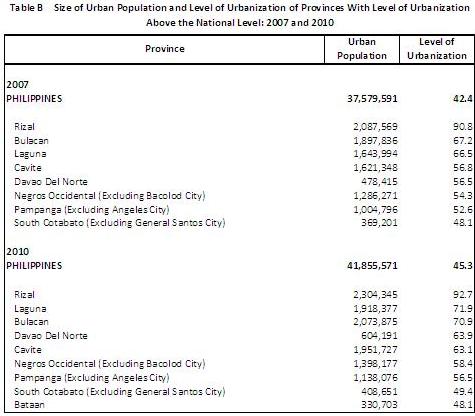
Excluding the cities in the NCR, there were 70 cities with at least 50 percent of the total population residing in areas classified as urban in 2010, while the corresponding number of municipalities was 105 (Table C).
Municipalities which were classified as entirely urban in 2010 are municipalities of Cabuyao and Kalayaan from the province of Laguna, municipalities of Cainta and Taytay from the province of Rizal, municipality of Talaingod from Davao del Norte province, and municipality of Jolo from Sulu province (Table C). None of the 70 cities were classified as entirely urban.
Those with at least 90 percent of the total population classified as urban population, aside from the abovementioned entirely urban municipalities, are municipality of Mariveles (Bataan); municipalities of Marilao, Norzaragay and Santa Maria (Bulacan); municipality of Apalit, City of San Fernando and Angeles City (Pampanga), Olongapo City (Zambales); Trece Martires City (Cavite); municipalities of Biñan, Los Baños and San Pedro, and City of Santa Rosa (Laguna); Lucena City (Quezon); municipalities of Angono, Rodriguez and San Mateo, and City of Antipolo (Rizal); Naga City (Camarines Sur); Cadiz City, San Carlos City and Bacolod City (Negros Occidental); Cities of Carcar and Talisay, Cebu City, Lapu-Lapu City, and Mandaue City (Cebu); municipality of Tagoloan and Cagayan de Oro City (Misamis Oriental); and General Santos City (South Cotabato) [Table C].
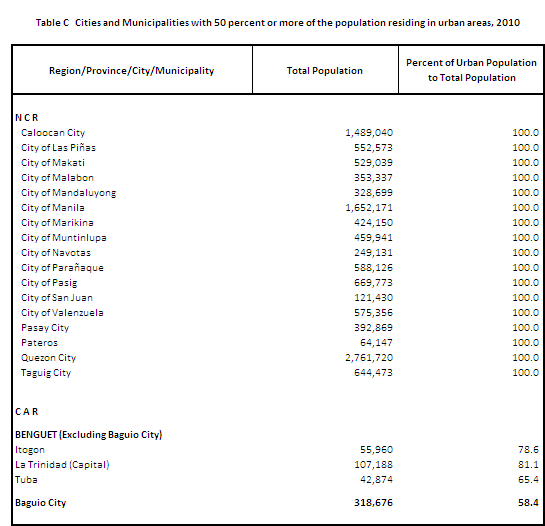
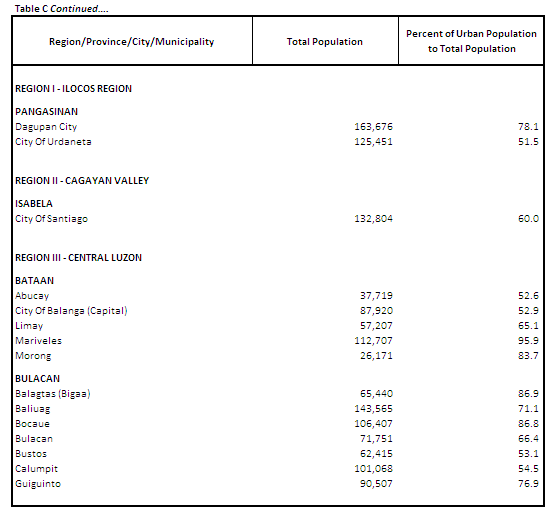
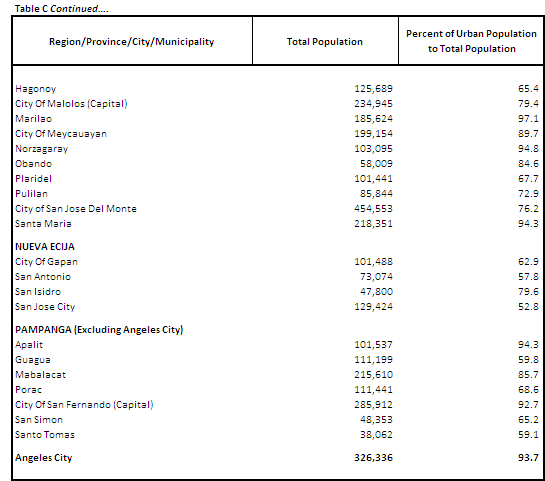
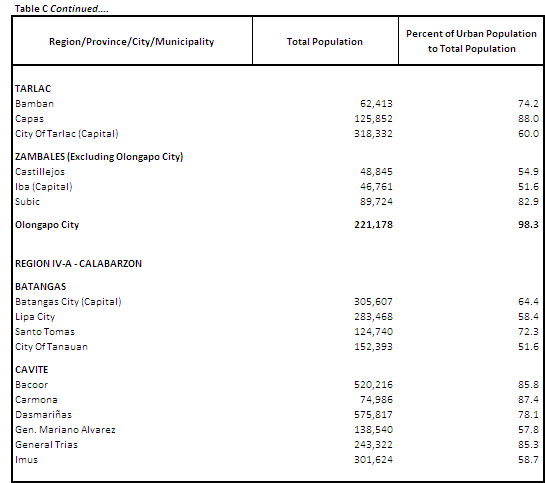
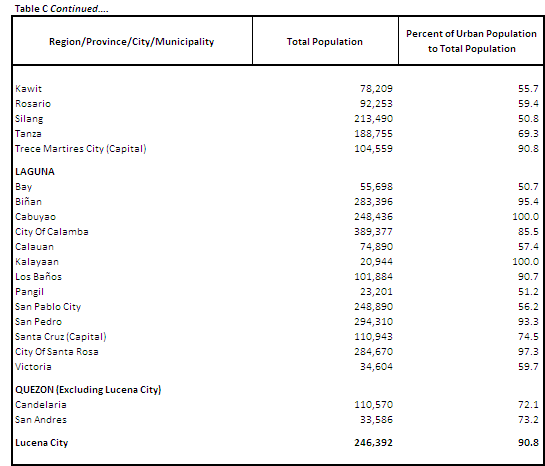
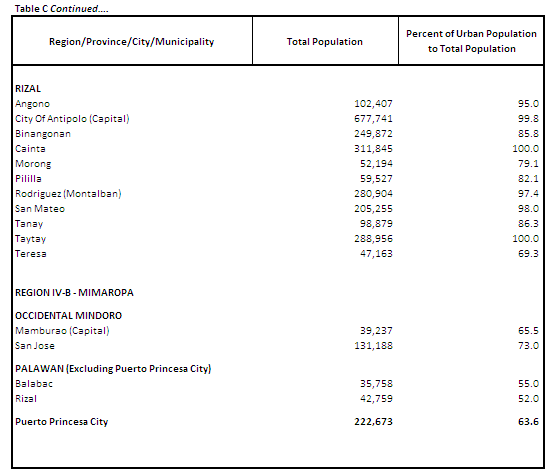
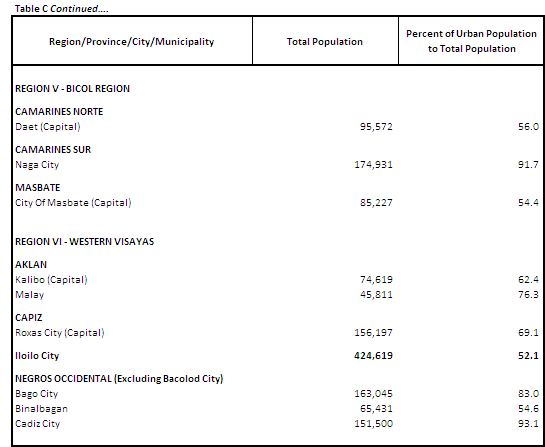
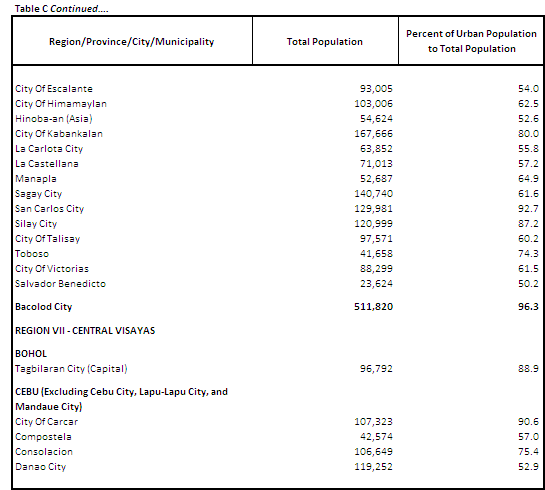
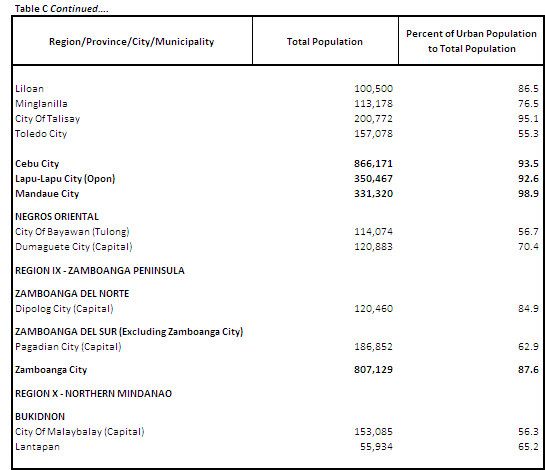
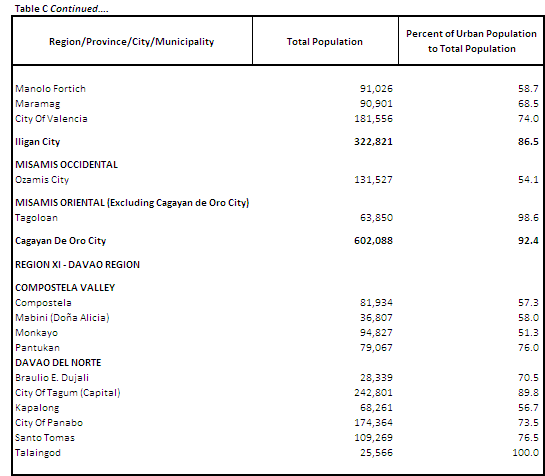
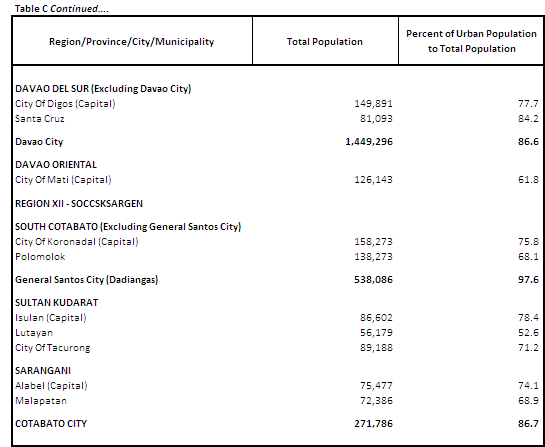
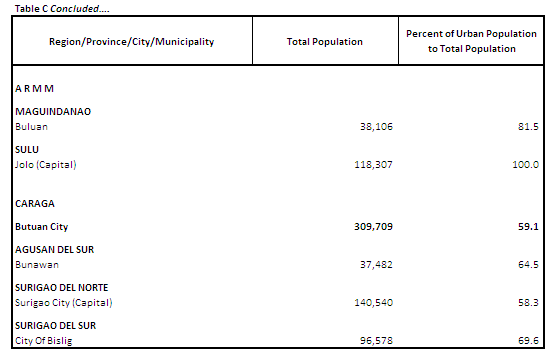
The urban population in the Philippines increased on average by 4.0 percent annually during the period 2007 to 2010 (Table D).
The tempo of urbanization or the difference in the average annual growth rates of the urban and rural population for the period 2007 to 2010 was 4.4 percent (Table D).
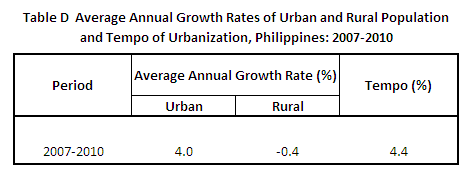
As of 2010, there were 42,025 barangays nationwide. Of this number, 13.6 percent or 5,697 barangays were classified as urban. In 2007, 4,838 barangays were classified as urban representing 11.5 percent of the total 41,994 barangays in that year (Table E).
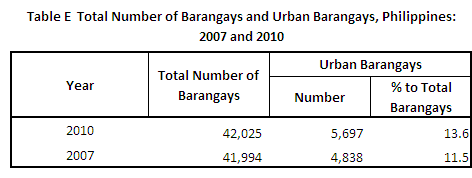
Majority (64.8%) of the urban barangays in 2010 were classified under Category 1, that is, having a population size of at least 5,000 (Table F). Altogether, the urban population in these barangays totaled 26.9 million accounting for 89.6 percent of the total urban population in the country. In 2007, 75.5 percent of the urban barangays were classified under the same category. Such urban barangays numbered 2,373.
The barangays classified as urban based on the presence of establishments with at least 100 employees (Category 2) totaled to 798 in 2010 making up 20.0 percent of the total urban barangays. By comparison, Category 2 urban barangays totaled to 329 in 2007, accounting for 10.5 percent of the total barangays in that year.
The remaining urban barangays, 608 or 15.2 percent of the total urban barangays in 2010, and 441 or 14.0 percent of the total urban barangays in 2007, had at least five small establishments (that is, with 10 to 99 employees) within the barangay, and at least five facilities within the two-kilometer radius from the barangay hall (Table F). These urban barangays fall into Category 3.
